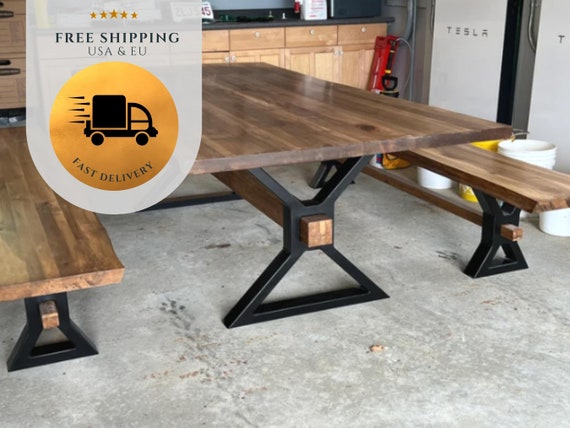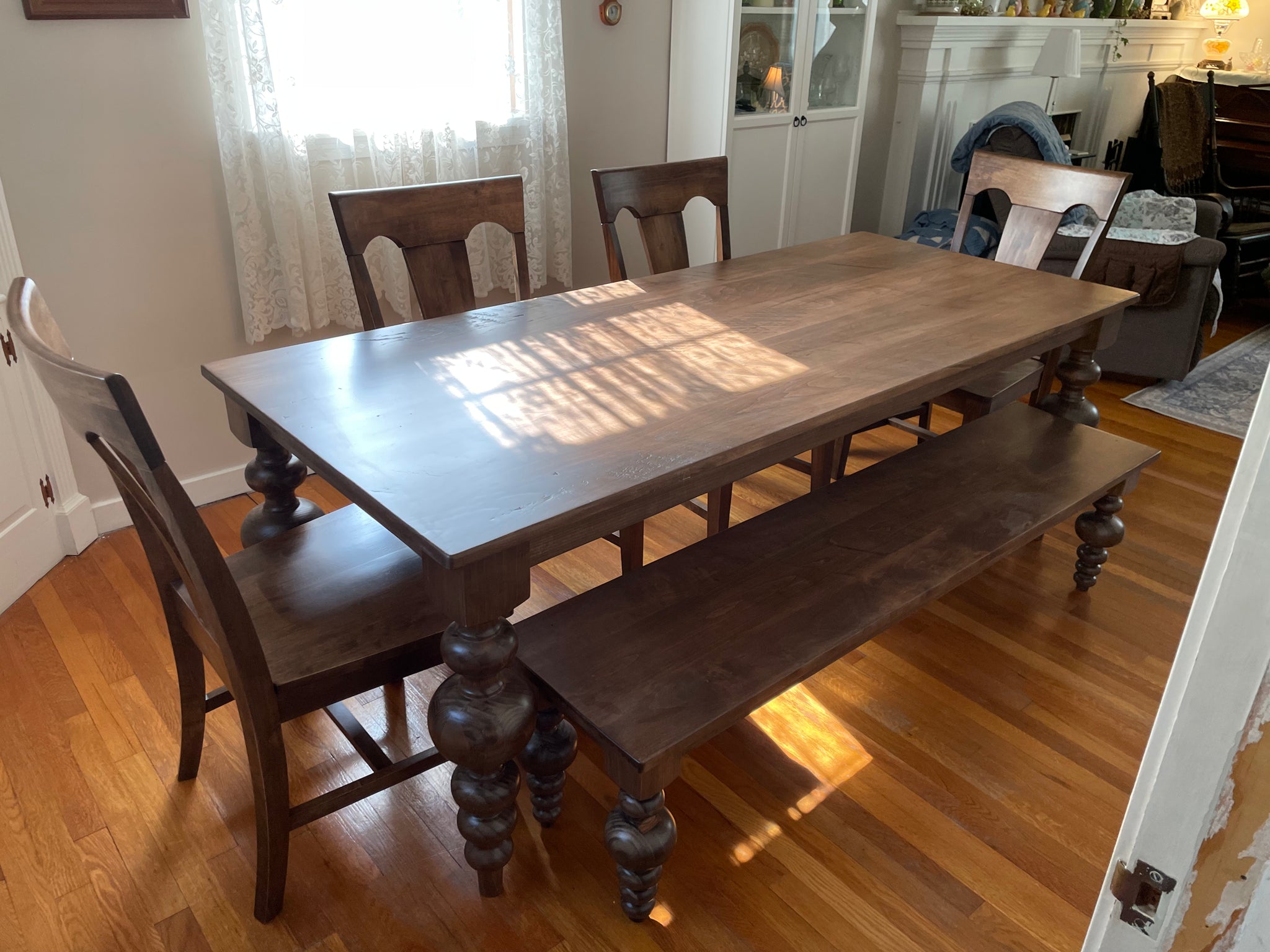Creative Ideas for Replacing or Refurbishing Your Dining Room Table Legs
Creative Ideas for Replacing or Refurbishing Your Dining Room Table Legs
Blog Article
From Standard to Modern: Discover the Ideal Dining-room Table Legs for Your Style
While traditional layouts such as cabriole and turned legs stimulate a feeling of classic sophistication, modern styles like barrette and geometric options provide a possibility for striking visual rate of interest. As you take into consideration these elements, the inquiry remains: how can you effortlessly integrate these diverse leg designs to develop an unified dining experience?
Understanding Table Leg Styles
The range of dining room table leg designs can considerably affect both the aesthetics and capability of the space. Each leg style adds one-of-a-kind useful functions and aesthetic aspects, dealing with diverse layout preferences and use demands. Understanding these styles is critical for picking the appropriate eating table that lines up with your general interior decoration vision.
For instance, conical legs provide a clean, timeless appearance that can boost an area's sophistication, while pedestal bases give stability and maximize legroom, making them excellent for smaller sized spaces. Barrette legs, a characteristic of mid-century modern layout, present an industrial panache, permitting a ventilated, open feel. Trestle legs evoke rustic charm, giving durable assistance and a feeling of timelessness.
Additionally, the option of materials plays a significant duty. Wood legs can bring heat and structure, whereas metal choices usually communicate a smooth, contemporary vibe. Inevitably, recognizing table leg styles is necessary for creating a natural eating location that mirrors personal style while making certain usefulness and convenience. By thoughtfully thinking about these elements, you can boost both the aesthetic and useful charm of your dining room.
Traditional Table Leg Options
When choosing dining room table legs, typical alternatives commonly symbolize classic sophistication and workmanship. These styles show an abundant heritage and a commitment to quality, making them excellent for those that appreciate timeless aesthetics.
One of the most famous conventional leg designs is the cabriole leg, defined by its graceful rounded form. This layout commonly features attractive carvings and is most typically discovered in Queen Anne and Chippendale furnishings. Another preferred alternative is the transformed leg, which flaunts a collection of smooth, rounded shapes that provide a timeless look while preserving security.
In addition, the straight leg, while basic, uses a unadorned and tough structure that can blend perfectly with a range of tabletop styles. For those attracted to ornate describing, claw-and-ball feet legs stimulate a sense of grandeur and can function as a stunning prime focus in any eating room.
Last but not least, stand bases, although not purely legs, provide a different standard choice that allows for ample legroom and can be magnificently sculpted. Each of these traditional leg styles adds to the total atmosphere of a dining-room, weding feature with visual appeal.

Modern Table Leg Designs
Modern table leg layouts use a varied variety of designs that highlight cutting-edge products and tidy lines. These styles often prioritize capability while serving as striking centerpieces within an eating room. Minimal appearances prevail, with legs crafted from products such as metal, glass, and crafted timber, which add to a ventilated and contemporary feeling.
One preferred layout is the hairpin leg, characterized by its slender, tapered framework that supplies security without overwhelming the tabletop look these up (dining room table legs). This design is typically discovered in mid-century modern-day furniture and can effortlessly match numerous eating table forms. An additional trend is using geometric shapes, where legs may take on unbalanced or angular kinds, adding visual interest and a touch of virtuosity

Blending Designs for Special Rooms
Usually, homeowners look for to develop distinct dining areas that reflect their individual design by read here blending numerous design components. This approach allows for the incorporation of varied aesthetics, resulting in a harmonious yet distinct atmosphere. For example, matching a rustic wood table with sleek, contemporary metal legs can create an appealing contrast that raises the room's general allure.
Additionally, integrating vintage table legs with modern tabletops can evoke a sense of background while keeping a modern perceptiveness. Such combinations not only display individual taste yet also motivate creative thinking, allowing homeowners to curate an area that really feels both personal and inviting.
Color plays a vital duty in this blending procedure; selecting table legs that enhance or contrast with the existing color design can improve visual passion. For instance, whitewashed legs can soften the boldness of a dark table surface area, creating a well balanced aesthetic.
Tips for Picking the Right Legs
Picking the right table legs is essential for achieving both performance and aesthetic charm in your dining space. Begin by considering the overall design of your area. Conventional setups gain from legs that include detailed makings or transformed designs, while modern spaces might require streamlined, minimalist designs.
Next, examine the height and stability of the legs. dining room table legs. Standard table vary between 28 to 30 inches in height, so make sure the legs enhance this measurement for comfort. In addition, durable products, such as hardwood or metal, can boost stability and longevity
Assess the leg form as well-- options include straight, tapered, or navigate to these guys stand layouts. Straight legs offer a classic look, while tapered legs can include a touch of elegance. Pedestal bases provide sufficient legroom and are optimal for smaller sized areas.
Final Thought
In recap, choosing the suitable dining-room table legs needs careful consideration of both modern and typical designs. Standard choices such as cabriole and turned legs offer timeless style, while modern-day styles like hairpin and geometric shapes give a modern touch. By balancing leg style, elevation, and product with the general decoration, a cohesive and welcoming environment can be achieved. Inevitably, the picked table legs ought to show the wanted aesthetic, enhancing the eating experience within the area.
The selection of dining area table leg styles can significantly affect both the visual appeals and functionality of the area. Inevitably, comprehending table leg designs is vital for creating a cohesive eating area that shows individual style while making certain practicality and convenience.One of the most iconic standard leg designs is the cabriole leg, characterized by its stylish rounded shape. Straight legs offer a traditional appearance, while conical legs can add a touch of style.In summary, picking the perfect eating area table legs requires cautious factor to consider of both modern-day and traditional styles.
Report this page